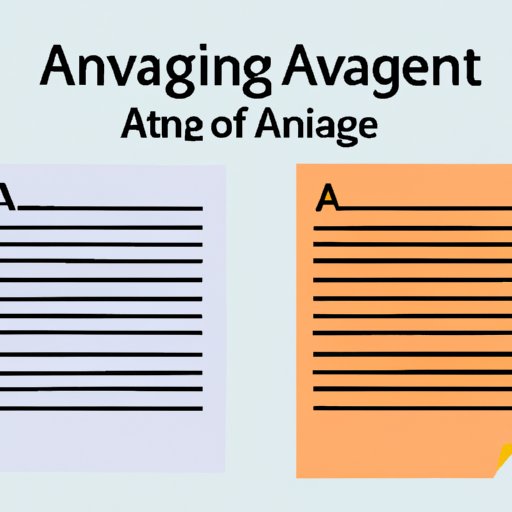Introduction
Argument writing is a form of communication in which one attempts to persuade another by presenting a reasoned argument. It is an essential skill used in many aspects of life, from academics to business to politics. In this article, we will explore the basics of argument writing, its various types, and effective strategies for crafting an argument. We will also look at some examples of argument writing.
Exploring the Basics of Argument Writing
Before diving into the specifics of argument writing, let’s take a look at what an argument actually is. An argument can be defined as a statement or set of statements that is intended to provide evidence for a specific claim. The goal of an argument is to convince the reader or listener that the claim is true. To do this, the argument must be well-structured and logically sound.
When constructing an argument, it is important to identify the parts of an argument. This includes the claim, the evidence that supports the claim, and the conclusion that is drawn from the evidence. Additionally, it is important to consider any logical fallacies that may be present in the argument. Logical fallacies are statements that appear to be valid but are not based on sound reasoning.
Understanding How to Construct an Argument
Once you have identified the parts of an argument, the next step is to understand how to construct an effective argument. This begins with formulating an argumentative thesis statement. A thesis statement should clearly state the position that you are taking on an issue and provide a rationale for your stance. It should be concise yet powerful.
Once you have established your thesis statement, it is important to select evidence to support your argument. This evidence can come from a variety of sources including research studies, personal experience, and expert opinion. It is important to ensure that the evidence is relevant and credible. Additionally, it is important to consider any counterarguments and address them in your argument.

Examining Different Types of Argument Writing
Now that we have explored the basics of argument writing, let’s take a look at the different types of arguments. There are three main types of argument writing: persuasive, analytical, and refutation. Each type has its own unique characteristics and goals.
Persuasive arguments are designed to convince the reader or listener to accept a certain point of view. These arguments rely heavily on rhetoric and emotional appeals in order to sway the audience. Analytical arguments are focused on providing a thorough examination of an issue. They often involve complex analysis and research in order to make a case for a specific viewpoint. Refutation arguments are designed to refute the claims of an opposing argument. These arguments require a detailed examination of the opposing viewpoint in order to effectively refute it.

Analyzing Strategies for Crafting an Effective Argument
In addition to understanding the different types of argument writing, it is important to understand the strategies for crafting an effective argument. One strategy is to utilize rhetorical strategies such as ethos, pathos, and logos. Ethos refers to an appeal to the credibility of the speaker or writer. Pathos refers to an appeal to the emotions of the audience. Logos refers to an appeal to logic and reason. Utilizing these strategies can help to make your argument more persuasive.
Another strategy is to create a clear and concise argument. This means avoiding unnecessary details and focusing on the key points of your argument. Additionally, it is important to consider opposing views and address them in your argument. This shows that you are willing to consider all sides of an issue and makes your argument more convincing.

Investigating Examples of Argument Writing
Finally, let’s examine some examples of argument writing. Here are some examples of persuasive arguments: “The death penalty should be abolished”; “We should invest in renewable energy sources”; “Smoking should be banned in public places”. Here are some examples of analytical arguments: “The economy is in a recession due to rising unemployment and inflation”; “The legalization of marijuana would have positive economic benefits”; “The use of technology has both positive and negative effects on society”. And here are some examples of refutation arguments: “The use of fossil fuels is not responsible for climate change”; “Vaccines are not dangerous”; “Genetically modified foods are safe for human consumption”.
Conclusion
In conclusion, argument writing is a form of communication in which one attempts to persuade another by presenting a reasoned argument. It is important to understand the basics of argument writing, its different types, and effective strategies for crafting an argument. Examples of persuasive, analytical, and refutation arguments were also discussed. By understanding the fundamentals of argument writing, you will be better equipped to craft an effective argument.
(Note: Is this article not meeting your expectations? Do you have knowledge or insights to share? Unlock new opportunities and expand your reach by joining our authors team. Click Registration to join us and share your expertise with our readers.)
